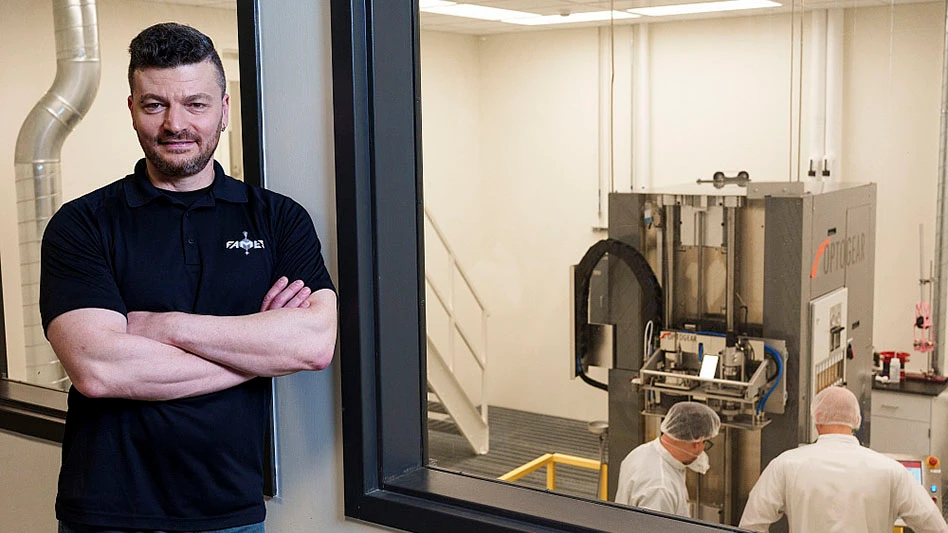The increased miniaturization of medical devices, such as surgical instruments and imaging tools continues to proliferate, and are paying off in many ways. One of the integral items that have helped to facilitate the use of miniaturized medical devices has been the metal tubing through which these devices pass, and that perform vital associated tasks such as aspiration, the cleanout of debris, and injection of fluids such as medications. Composed of medical-grade metal, in sizes commonly as thin as a pin, miniature tubing is used for a wide assortment of procedures ranging from ultra-fine catheters to miniscule implants.
“While these small metal tubes are probably considered ancillary to many miniaturized medical applications, they have certainly facilitated them,” says Lance Heft, CEO of International Tube. “This is a highly specialized area that requires both sophisticated metallurgical expertise as well as unique fabrication skills. Those capabilities are necessary not only to produce custom products while avoiding unnecessary costs, but the key requirement is to eliminate any possibility of failure during use.”
 |
| Composed of medical-grade metal, in sizes commonly as thin as a pin, the use of miniature tubing is used for a wide assortment of procedures ranging from ultra-fine catheters to miniscule implants. |
Heft says that when designing and fabricating medical tubing it is vital to be able to draw the necessary material to the needed diameter. Perhaps more important, the tube must have an even, smooth ID. In addition, specialized shapes may be essential, requiring swaging, flaring, or threading a portion of a tube.
For example, International Tube was involved in the development of a radioactive seed used in the localized treatment of tumors in prostate cancer cases. Known as brachytherapy, the treatment requires the manufacturing of very small titanium medical tubing that is similar to a pinhead in size and shape.
“Essentially, the fabrication of the seeds requires that a titanium medical tubing that is about four pin-heads thick be welded closed on one end,” Heft explains. “A radioactive isotope is placed into the enclosure, which is then closed at the open end. Depending on the treatment requirements, up to 100 tiny seeds will be placed into or near the prostate tumor. The radiation seeps through the miniature tubing, into the cancerous tissue next to the seeds.”
Heft says his firm provided the seed hulls for one of the first suppliers of radioactive seeds used for prostate cancer. He was involved with the design and assisted with multiple FDA trials and approvals, using multiple sizes of tubing until accomplishing the final design. At that point, International Tube began fabricating 250,000 seed tubes at a time, which required the use of merely about 1,000ft of tight tolerance small diameter titanium tubing.
Heft’s firm additionally worked to improve the safety in small-diameter metal tubing used for the insertion of fiber optic cameras used in microsurgery. Due to the pliable nature of fiber optics, the device manufacturer got reports that the fibers occasionally snagged in the tubes. Worse yet, this snagging sometimes resulted in metal-to-metal contact, which produced distressing shocks to the patients.
“The problem was that the tube ID surface was not smooth enough for this virtually micro-level application,” Heft explains. “So our engineers analyzed the requirements and designed an ultra-smooth interior tube surface. The design of the medical tubing saved the manufacturer almost 50% on expenditures for replacement fiber optics."
International Tube
Collegeville, PA
internationaltube.com

Explore the October 2010 Issue
Check out more from this issue and find your next story to read.
Latest from Today's Medical Developments
- GrindingHub Americas launches in 2027 in Cincinnati, Ohio
- Methods Machine Tools now offers the Nakamura-Tome NT-Flex
- Battelle awards $900,000 in STEM education grants to Ohio schools
- #55 Lunch + Learn Podcast with KINEXON
- Starrett and Gerstner offer limited edition, American made 1950s replica wooden machinist tool chests
- EMCO’s UNIVERSALTURN 50: The new benchmark in universal turning
- Archetype's Expertise for Equity accelerates early-stage innovation
- Stratasys expands its AM solutions with Tritone's cutting-edge technology





